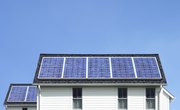Everyone wants to save money and most want to protect the environment. With new Internal Revenue Service tax code associated with the American Recovery and Reinvestment Act of 2009, taxpaying homeowners have an opportunity to simultaneously save money and energy, and protect the environment as well via an income tax credit relevant to the production of heat through the use of a renewable resource.
Energy Credit
Labeled the Residential Energy Efficient Property Credit by the American Recovery and Reinvestment Act of 2009 legislation, this deduction applies to the installation of high-efficiency appliances, and was designed to encourage Americans to substantially reduce their use of energy resources.
According to the IRS, a stove that burns biomass fuel to heat a home or water for use in the home and has “a thermal efficiency rating of at least 75 percent as measured using a lower heating value” qualifies for the credit. Since a pellet stove burns biomass, a renewable energy source made from biological material, it qualifies for the credit. Manufacturers certify their products as eligible for federal energy credits, and the IRS has notified manufacturers that products must meet strict standards before the certification label is applied to the product. While those who claim the credit can normally rely on this certification, if there is a doubt, a taxpayer should contact the IRS for guidance concerning the product’s status.
Other qualifying products include high-efficiency air conditioning units, water heaters and traditional gas or electric furnaces. Taxpaying homeowners who qualify under the new law may enjoy a tax credit of as much as 30 percent of the cost of a newly installed, eligible product. The credit applies to labor costs as well. Other credits apply to energy-efficient windows, doors, insulation, certain roof types and skylights, although installation costs for these items are excluded from credit consideration.
Other Energy Credits
The Nonbusiness Energy Property Credit is another energy-related credit available through the American Recovery and Reinvestment Act of 2009. This credit was designed to spur investment in alternative sources of energy. A credit of up to 30 percent, including labor costs, for alternative-energy appliances or systems, applies to such products as wind turbines, fuel cell property and solar electric hot water heaters or whole-house systems.
Claiming Energy Credits
To claim energy credits in 2010, file Form 5695 along with Form 1040 when submitting a federal income tax return. Use this form for both aforementioned energy credits. Use Form 5695 to claim Residential Energy Efficient Property Credit carry-forward amounts from 2009, or to carry any unused portion of the credit forward to 2011. Taxpayers do not have to itemize deductions to claim energy-related credits. For the 2010 tax year, the Residential Energy Efficient Property Credit is limited to 30 percent of the cost, or $1,500, whichever is the lower amount. There is no limit to the amount of credit available for the Nonbusiness Energy Property Credit, except when taking the credit for fuel cell property.
Benefits
Taxpayers enjoy double savings when using alternative energy or energy-efficient technology in their homes. In most cases, the savings include reduced energy bills along with the tax credit. Payback in the form of energy bill savings vary depending on the initial investment and the resulting reduction in the home's electric or gas bill.
Considerations
When purchasing an energy-efficient appliance, keep in mind that the Department of Energy’s Energy Star label does not automatically qualify it for the energy-efficient credit. Check with the IRS to determine eligibility before making the purchase. Alternative energy systems should bear a label authorizing the product for the tax credit. While this information is considered reliable, check with the IRS before investing to make sure the system qualifies for the credit. Some states offer energy-conservation credits. Check with the state's taxing authority to determine if energy-efficiency tax credits are available in your state of residence.
References
- Recovery: Energy Credits – It’s Not Too Late
- IRS: Form 5695 Residential Energy Credits
- IRS: Nonbusiness Energy Property
- Internal Revenue Service. "Instructions for Form 5695, Residential Energy Credits," Page 1. Accessed Feb. 12, 2020.
- U.S. Congress. "H.R. 1892, Bipartisan Budget Act of 2018." Accessed Feb. 12, 2020.
- Internal Revenue Service. "Instructions for Form 5695, Residential Energy Credits," Pages 1-2. Accessed Feb. 12, 2020.
- Internal Revenue Service. "Energy Incentives for Individuals: Residential Property Updated Questions and Answers." Accessed Feb. 12, 2020.
Writer Bio
Cheryl Withrow is a writer in Michigan’s untamed Upper Peninsula. Following a teaching career she served alternately as editor of the "Washington County News" and the "Geneva County Reaper," and as associate editor of "Bay Life" magazine. Withrow holds a Bachelor of Science in business with a major in accountancy from Wright State University and a Bachelor of Arts in English from Ohio University.

